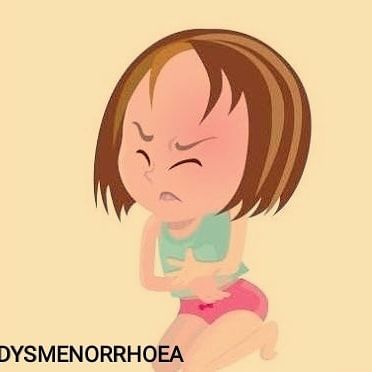Know About Dysmenorrhoea!
Dysmenorrhoea
Dysmenorrhea, also known as painful periods, or menstrual cramps, is pain during menstruation. Its usual onset occurs around the time that menstruation begins. Although it's normal for most women (20-90%) to have mild abdominal cramps on the first day or two of their period, about 10% of women experience severe pain.It is the most common menstrual disorder. Typically it starts within a year of the first menstrual period.
Types of dysmenorrhoea
1) primary dysmenorrhoea where there is no apparent pathological cause for it. Almost 50% woman suffer from this. Seen particularly in adolescents and young women and mostly resolves post pregnancy
2) secondary dysmenorrhoea is generally related to some kind of gynecologic disorder. Most of these disorders can be easily treated with medications or surgery.
Causes may be:
Fibroids – benign tumours that develop within the uterine wall or are attached to it
Adenomyosis – the tissue that lines the uterus (called the endometrium) begins to grow within its muscular walls
Sexually transmitted infection (sti)
Endometriosis – fragments of the endometrial lining that are found on other pelvic organs
Pelvic inflammatory disease (pid), which is primarily an infection of the fallopian tubes, but can also affect the ovaries, uterus, and cervix
An ovarian cyst or tumour
The use of an intrauterine device (iud), a birth control method
Symptoms
The main symptom of dysmenorrhea is pain. It occurs in your lower abdomen during menstruation and may also be felt in your hips, lower back, or thighs. Other symptoms may include nausea, vomiting, diarrhea, lightheadedness, headache, or fatigue.
For most women, the pain usually starts shortly before or at the beginning of their menstrual period, peaks around 24 hours after the start of bleeding, and subsides after 2 to 3 days. Sometimes clots or pieces of bloody tissue from the lining of the uterus are expelled from the uterus, causing pain.
Making a diagnosis
If you experience painful periods, check with your doctor to see whether you might have an underlying disorder that is causing secondary dysmenorrhea. You may be given a pelvic examination, and your blood and urine may be tested.
A doctor may also wish to use ultrasound to get a picture of your internal organs or even use the technique of laparoscopy for a direct look into your uterus.
Treatment
Primary dysmenorrhea is usually treated by medication such as an analgesic medication, ocp'sTreatment for secondary dysmenorrhea will vary with the underlying cause. Diagnostic laparoscopy, other hormonal treatments, or trial of transcutaneous electrical nerve stimulation (tens) are potential next steps. Surgery can be done to remove fibroids or to widen the cervical canal if it is too narrow.




+1.svg)
